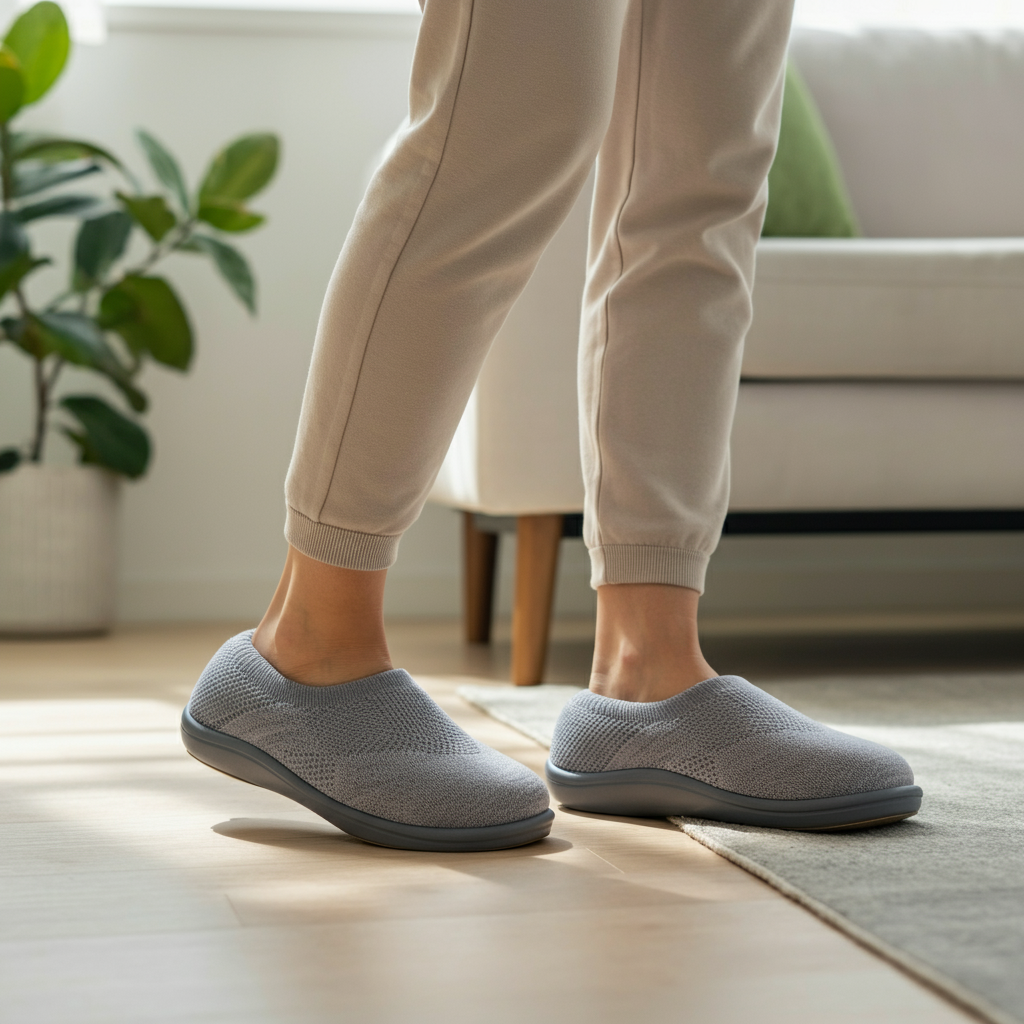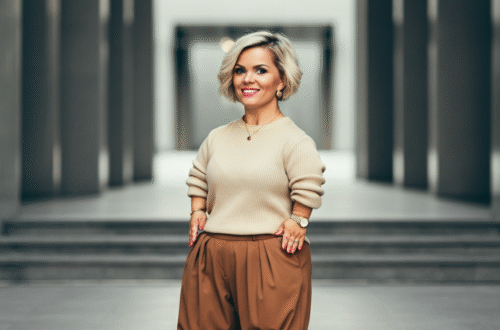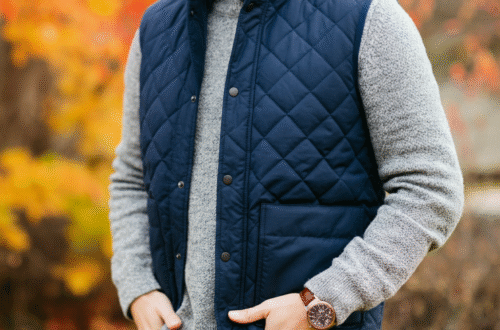Finding the right pair of slippers might seem like a small detail, but for your feet, it’s a major decision. Many people come home and slide into flimsy, flat slippers that offer little to no support. While they might feel soft for a moment, they can contribute to foot pain and discomfort over time. This is where orthopedic slippers come in. They are designed not just for comfort, but for health, providing the support your feet need to relax and recover correctly.
Think of them as a health tool for your feet. Just as you’d choose a supportive mattress for your back, choosing the right indoor footwear is crucial for your foot health. These specialized slippers are engineered to support the natural structure of your foot, helping with alignment and reducing strain. Whether you deal with chronic foot pain or simply want to take better care of your feet, understanding what makes orthopedic slippers different is the first step toward happier, healthier feet.
What Exactly Are Orthopedic Slippers?
At first glance, orthopedic slippers might look similar to regular house shoes, but their construction tells a different story. The term “orthopedic” refers to features designed to support the function of the musculoskeletal system, specifically your feet, ankles, and lower legs. Unlike standard slippers that are often flat and made of soft, unsupportive materials, orthopedic footwear is built with purpose.
The core difference lies in their anatomical design. These slippers typically feature a structured footbed with built-in arch support, a deep heel cup to stabilize your foot, and ample cushioning to absorb shock with every step. The goal is to promote proper foot alignment, which can help alleviate stress not just on your feet, but on your knees, hips, and back as well. They are often recommended by podiatrists for individuals experiencing common foot ailments, but they are beneficial for anyone seeking to prevent future problems. In essence, they are a therapeutic tool disguised as cozy indoor footwear.
The Science Behind Foot Support
The human foot is an intricate structure of 26 bones, 33 joints, and over 100 muscles, tendons, and ligaments. When you walk, your feet absorb the impact of your entire body weight. Without proper support, this repeated stress can lead to a host of problems. This is where the design of orthopedic slippers becomes so important. They are engineered based on the principles of biomechanics, the study of how our bodies move.
A key feature is the contoured footbed that cradles the foot. This isn’t just for comfort; it helps distribute your body weight evenly across the entire foot, rather than concentrating it on the ball and heel. This even distribution reduces pressure points and strain. Furthermore, the built-in arch support prevents the arch from collapsing, a common issue that leads to conditions like plantar fasciitis and overpronation. By keeping the foot in its natural alignment, these slippers help the muscles and ligaments in your feet function efficiently without getting overworked.
Key Benefits of Wearing Orthopedic Slippers
Switching to orthopedic slippers can have a significant positive impact on your overall comfort and foot health. The benefits go far beyond simple cushioning, addressing the root causes of many common aches and pains. From immediate relief to long-term prevention, the advantages are clear.
Here are some of the primary benefits you can expect:
- Pain Relief: One of the most celebrated benefits is relief from foot pain. They are specifically designed to help with conditions like plantar fasciitis relief, heel spurs, bunions, and general foot fatigue. The combination of arch support and cushioning reduces the strain on the plantar fascia ligament, a common source of heel pain.
- Improved Foot Alignment: Many people suffer from overpronation (where the foot rolls inward) or supination (where it rolls outward). Orthopedic slippers with features like deep heel cups and firm arch support help correct these alignment issues, promoting a more natural gait.
- Enhanced Comfort and Cushioning: Beyond structural support, these slippers are designed for superior comfort. Using materials like memory foam and EVA, they provide a cushioned footbed that molds to your unique foot shape while absorbing impact from hard floors.
- Better Circulation: For individuals with diabetes or circulation issues, proper footwear is critical. Many orthopedic slippers are diabetic-friendly, featuring seamless interiors to prevent irritation and a wide toe box that allows toes to spread out naturally, improving blood flow.
- Increased Stability: With features like slip-resistant outsoles and a structured design, these slippers offer more stability than traditional house shoes. This is especially important for preventing slips and falls, particularly for older adults.
Who Should Consider Orthopedic Slippers?
While anyone can benefit from better foot support, certain groups of people will find orthopedic slippers particularly helpful. If you spend a lot of time on your feet at home, especially on hard surfaces like tile or hardwood, the extra support can make a world of difference. These slippers are not just for those with existing medical conditions; they are an excellent preventative measure for anyone.
Consider making the switch if you fall into any of these categories:
- Individuals with Foot Conditions: This is the most obvious group. If you have been diagnosed with plantar fasciitis, flat feet, high arches, bunions, hammertoes, or Achilles tendonitis, a pair of podiatrist recommended slippers can be a key part of your management plan.
- People with Chronic Pain: If you experience regular pain in your feet, ankles, knees, or even your lower back, your footwear could be a contributing factor. Improving your foot alignment with supportive slippers can help alleviate this discomfort.
- Older Adults: As we age, the fatty pads on the bottoms of our feet thin out, and our arches can begin to fall. Orthopedic slippers provide the necessary cushioning and stability to improve balance and reduce the risk of falls.
- Diabetics: Individuals with diabetes need to take extra care of their feet. Diabetic-friendly slippers with a wide toe box and soft, seamless linings help prevent sores and improve circulation.
- Athletes and Active Individuals: After a long run or intense workout, your feet need to recover. Slipping into supportive footwear can help reduce inflammation and soothe tired muscles and ligaments.
Common Features to Look for
When shopping for orthopedic slippers, it’s helpful to know what features provide the most benefit. Not all “comfort” slippers are created equal. True orthopedic designs will incorporate specific elements to provide therapeutic support. As you browse different options, keep an eye out for these key components to ensure you’re getting a high-quality product that will truly care for your feet.
Essential Design Elements
- Excellent Arch Support: This is non-negotiable. The insole should have a pronounced, supportive arch that matches the natural curve of your foot. This is crucial for preventing arch collapse and providing plantar fasciitis relief.
- Deep Heel Cup: A structured heel cup cradles the heel, providing stability and helping to control pronation. It keeps your foot locked in the proper position for optimal alignment.
- Cushioned Footbed: Look for materials like memory foam, cork, or EVA (ethylene vinyl acetate). Memory foam conforms to your foot for personalized comfort, while EVA offers lightweight shock absorption.
- Wide Toe Box: A roomy toe box allows your toes to splay naturally, which is important for balance and circulation. It prevents cramping and pressure that can lead to bunions or hammertoes.
- Adjustable Straps: Features like Velcro or buckle straps allow you to customize the fit. This is especially useful if your feet swell throughout the day or if you have a non-standard foot width.
- Durable, Slip-Resistant Outsole: The outsole should be made of a sturdy material like rubber or a dense EVA sole. A good tread pattern is essential for providing traction on various indoor surfaces, preventing slips.
- Breathable Materials: To keep your feet comfortable and dry, look for slippers made from breathable materials like wool, cotton, or open-weave synthetics. This helps prevent sweat and odor buildup.
Types of Orthopedic Slippers: A Comparison
Orthopedic slippers come in various styles and materials, each suited for different needs and preferences. Understanding the differences can help you choose the perfect pair for your lifestyle and specific foot concerns.
|
Slipper Type |
Key Materials |
Support Level |
Best For |
|---|---|---|---|
|
Open-Heel/Slide |
Memory Foam, Wool, EVA Sole |
Moderate |
Quick wear, breathability, mild foot pain. |
|
Closed-Back/Clog |
Suede, Felt, Rubber Sole |
High |
Maximum stability, overpronation, all-day wear. |
|
Bootie Slippers |
Shearling, Fleece, Microfiber |
Moderate to High |
Cold feet, ankle support, extra warmth and comfort. |
|
Adjustable Slippers |
Leather, Fabric, Velcro Straps |
Customizable |
Swollen feet, bunions, wide or narrow feet. |
Orthopedic Slippers for Plantar Fasciitis Relief
Plantar fasciitis is one of the most common causes of heel pain, affecting millions of people. It occurs when the plantar fascia, the thick band of tissue that runs across the bottom of your foot, becomes inflamed. Walking barefoot or in unsupportive footwear on hard surfaces can greatly exacerbate this condition. This makes choosing the right indoor footwear incredibly important.
High-quality orthopedic slippers are a frontline defense against plantar fasciitis pain. They work by providing two key elements: cushioning and arch support. The arch support lifts the plantar fascia ligament, reducing the strain and tension that causes inflammation. Meanwhile, a well-cushioned heel absorbs the shock of each step, protecting the tender area from further impact. Many users report a significant reduction in their morning foot pain—the hallmark symptom of plantar fasciitis—after consistently wearing supportive slippers at home. When combined with other treatments, they can accelerate recovery and prevent recurrence.
The Importance of a Good Fit
Even the best-designed orthopedic slippers won’t be effective if they don’t fit correctly. A poor fit can negate the benefits and even create new problems. When trying on slippers, make sure there is about a half-inch of space between your longest toe and the end of the slipper. Your heel should sit comfortably in the heel cup without slipping out as you walk.
The width is just as important as the length. Your foot should feel snug but not constricted. If the slippers have a wide toe box, your toes should be able to wiggle freely. If you’re considering a style with adjustable straps, use them to secure the slipper so your foot doesn’t slide around. Many brands offer half sizes and different width options, so take the time to find the size that matches your foot’s unique dimensions. An article on the truefashionstory.com Blog notes that a proper fit is the foundation of all supportive footwear.
Caring for Your Orthopedic Slippers
To ensure your orthopedic slippers last a long time and continue to provide the support you need, proper care is essential. Always follow the manufacturer’s cleaning instructions. Most slippers made from fabric or wool can be spot-cleaned with a mild detergent and water. Some may even be machine washable on a gentle cycle, but you should always air dry them to prevent shrinking or damage to the supportive structures.
For materials like suede or leather, use a specialized cleaner and brush to keep them in good condition. Regularly check the footbed and outsole for signs of wear. Over time, the cushioning and support can break down. Once the arch support feels less firm or the tread on the outsole is worn smooth, it’s time for a new pair. Investing in a new pair every year or so, depending on wear, ensures you continue to receive the maximum therapeutic benefits.
Debunking Common Myths
There are a few common misconceptions about orthopedic slippers that might deter people from trying them. Let’s clear them up.
- Myth 1: They are unattractive and bulky. While this may have been true decades ago, today’s designs are stylish and modern. Brands now offer a wide range of colors and silhouettes, from sleek slides to cozy booties, proving that you don’t have to sacrifice style for comfort.
- Myth 2: They are only for elderly people. This is false. Foot problems can affect people of all ages. Wearing supportive footwear is a proactive health choice for anyone, regardless of age, especially for preventing future issues.
- Myth 3: They are uncomfortably rigid. While they are structured, the best orthopedic slippers use materials like flexible EVA and plush memory foam to provide a perfect balance of softness and support. They are designed to be firm where needed (like the arch) and soft elsewhere.
Key Takeaways
- Orthopedic slippers are designed with anatomical support, including arch support and deep heel cups, to promote foot health.
- They offer numerous benefits, such as pain relief from conditions like plantar fasciitis, improved foot alignment, and enhanced stability.
- Key features to look for include a cushioned footbed, a wide toe box, breathable materials, and a slip-resistant outsole.
- A proper fit is crucial for the slippers to be effective; ensure there is enough room for your toes and that your heel is secure.
- These slippers are beneficial for a wide range of people, not just those with existing foot conditions, but also as a preventative measure for anyone.
Frequently Asked Questions (FAQ)
1. Can I wear orthopedic slippers all day?
Yes, they are designed for extended wear around the house. Their supportive structure makes them a much better choice for all-day wear than traditional flat slippers or going barefoot on hard floors.
2. Are orthopedic slippers the same as recovery sandals?
They share similar principles, like arch support and cushioning. However, orthopedic slippers are specifically designed for indoor use and often feature warmer, softer materials like wool or fleece, while recovery sandals are typically made of waterproof foam for post-workout or outdoor use.
3. How long does it take to get used to them?
If you are new to wearing supportive footwear, there might be a short break-in period of a few days as your feet adjust to the new level of arch support. It’s a good idea to wear them for a few hours at a time initially.
4. Do I need a prescription to buy orthopedic slippers?
No, you do not need a prescription. They are widely available for purchase online and in stores. However, if you have a specific or severe foot condition, it’s always wise to consult with a podiatrist who may recommend a particular brand or type.
5. Are orthopedic slippers expensive?
They generally cost more than standard slippers due to their advanced design, materials, and construction. However, you can think of them as an investment in your health and comfort. The durability and pain-relieving benefits often make them a cost-effective choice in the long run.
6. Can washing my orthopedic slippers ruin their support?
It can if not done correctly. Always check the care label. Machine washing on a harsh cycle or machine drying can damage the supportive foam and adhesive. Gentle spot cleaning or hand washing is usually the safest method to preserve the slipper’s structure.
7. What is the difference between memory foam and EVA?
Memory foam is a soft, dense foam that molds to the shape of your foot, providing personalized cushioning. EVA is a lighter, more rubber-like foam that is excellent for shock absorption and providing a firm yet flexible sole. Many high-quality slippers use a combination of both.





